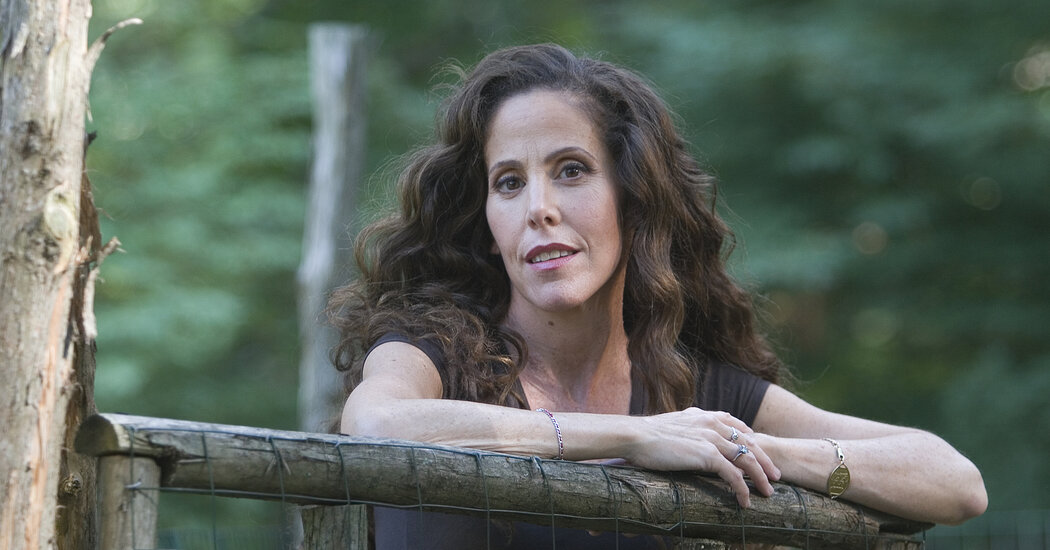Can Hidden Fungal Networks Help Save Earthly Existence?
About 500 million years ago, when aquatic plants began to inch toward land, they couldn’t live there on their own. They enlisted fungal mycelium networks, which served as their root systems for a few tens of millions of years before they developed their own and could live independently. Still, about 90 percent of plants depend on symbiotic fungi.
But during that time, the planet was transformed: Early plants and their fungal networks helped lower the amount of atmospheric carbon dioxide by 90 percent, enabling the conditions for life on Earth as we know it.
These days, human activities are sending atmospheric carbon dioxide levels soaring (though not quite as high as during the pre-fungal period), and scientists and other fungal enthusiasts recognize that fungi might be able to help draw down some of that carbon once again.
To Merlin Sheldrake, a biologist and author of “Entangled Life: How Fungi Make Our Worlds, Change Our Minds, and Shape Our Futures,” that is really just one of the amazing things fungi of all kinds do: as “ecosystem engineers,” and as the enablers of our very lives on this planet, whose centrality we ignore “at our peril,” he said.
The following conversation has been edited and condensed.
There has been such an explosion of interest in fungi recently, and I’m wondering how you understand that, or why you think that has come about. Certainly your book is a big part of that.
I think there are a few reasons. One is that we know more about fungi than we used to — technological developments over the last couple of decades have led to really exciting discoveries and have granted new access to fungal lives.
There is also a growing awareness of the fundamental interconnectedness of the living world — driven both by new research and by the worsening fallout from our ecocidal activities — which has prompted an ecological turn in academic and popular discourse. Fungi embody the most basic principle of ecology: that of the relationships between organisms. Mycelium is ecological connective tissue and reminds us that all life-forms, humans included, are bound up within seething networks of relationships, some visible and some less so.
Fungi may have become poster organisms for ecological thinking, but interest in fungal lives has also been driven by the rise of network science. “Network” has become a master concept, from computing to sociology, to neuroscience, ecology, economic systems. Fungi are ancient living networks, and the recent surge of interest in these organisms reflects our modern fascination with the extraordinary power of networks, from transport systems to the internet, to shape our lives and cultures.
And then there’s the urgency. There are a number of ways that we might partner with fungi to help us to adapt to life on a damaged planet, and we don’t know nearly as much as we should. Multiplying ecological emergencies have brought about renewed interest in the fungal world, and there are many radical mycological possibilities.
Some fungi produce powerful antiviral compounds which reduce colony collapse disorder in honeybees. In the process of mycoremediation, fungi can be harnessed to break down toxic pollutants. In mycofabrication, fungi are used to produce sustainable materials, from bricks to leather. Not to mention the many ways that fungi change the way we think, feel and imagine.
I was reading the op-ed you co-wrote in The Guardian about the opportunity that mycorrhizal fungal networks present for carbon and nutrient cycling and storage. How do you think about bridging the gap between the popular cultural interest in fungi and organizing for conservation of these organisms?
Fungi are a kingdom of life that have not had a kingdom’s worth of attention. They are neglected in conservation frameworks, educational curriculums, and scientific and medical research. Part of the challenge is raising awareness of fungal life and the many vital roles they play in the biosphere, of course.
But this is only the start. I work with an organization called the Society for the Protection of Underground Networks, which is trying to create robust maps of the planet’s fungal communities that can be used by decision makers to take account of the life in the soil. I work with two other organizations called Fauna Flora Funga and the Fungi Foundation, which are working to get fungi written into conservation frameworks, many of which currently exclude this third kingdom of macroscopic life. When we destroy fungal communities, we undermine ancient life support systems that make so much of life possible.
Even without the data, when we just talk about carbon sequestration in forests or grasses, mycorrhizal networks don’t usually enter into the conversation. Maybe that’s the bias of us being primarily visual creatures, which is that we look for the thing that we can see.
Despite the fact that soils are a major carbon pool, we tend to neglect underground ecosystems. This is partly because we don’t know much about what happens underground and the many lives that are lived out of our sight. It’s difficult to study these organisms and what they do. In a recent paper that I was a part of, we discuss these challenges in more depth. Our estimates of the carbon that moves into the soil through mycorrhizal fungi are imperfect and should be interpreted with caution, but they give an indication of how important mycorrhizal relationships are in mediating nutrient fluxes in global ecosystems.
When I was reading your book, I often thought, I can’t believe I don’t know this. Fungi have made life on Earth possible, and yet so much of what you wrote about was totally new to me. It made me think, how do we know anything that we think we know?
I love studying the living world because so often our enquiries render the familiar unfamiliar. Fungi, like so many organisms, invite us to think in new ways about many well-handled concepts that we might have thought we understood. There are so many urgent challenges we face today, and there are many ways we can partner with fungi to help adapt to life on a damaged planet. And there is so much we don’t know.


